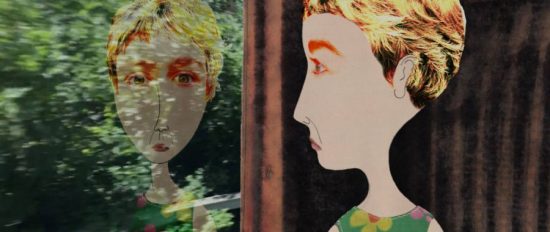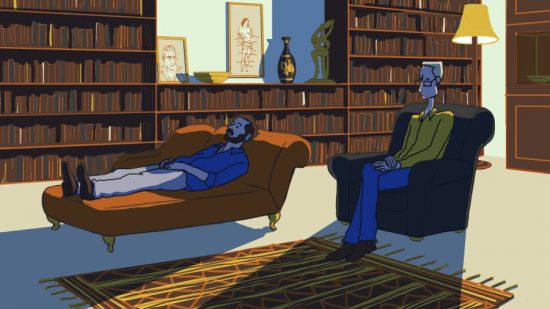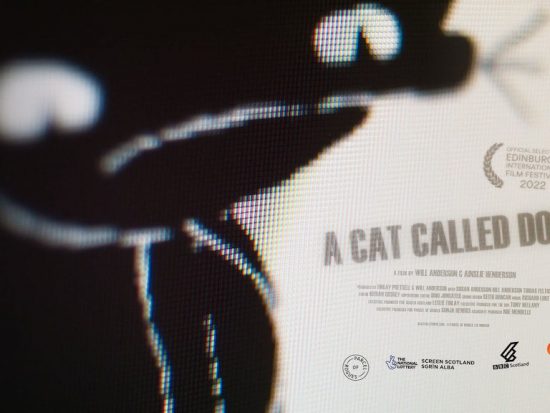Animation at the Edinburgh International Film Festival
My first day at the 2022 edition of the world’s longest continually running film festival (now in its 75th year), and I started off with three screenings back to back, all in the animation strand. The first two showings were the two halves of the annual McLaren Animation Awards nominees (named in honour of acclaimed Scottish animation pioneer, Norman McLaren). We didn’t have them at the much-reduced EIFF last summer, so it was especially nice to see them return for the first time since 2019 in the Pre-Covid World. The McLarens are always one of my personal favourite segments of the EIFF – they showcase a pretty diverse array of (often very young) talent, tackling different subjects, using very different styles and animation techniques. I often see some of them crop up months later in shortlists for major awards like BAFTA or even our old chum, Oscar, so it’s a great showcase for talented animators, especially as many of the creators are present and can talk to the festival audiences about their work.
As with any collection of short pieces, there are always some that appeal to a viewer more than others, and I will hold up my hand right here and say that yes, of course that is very subjective and individual – another viewer might prefer a totally different set from each of the two McLaren sections. So with that caveat in mind, some of this year’s short animations that I particularly enjoyed! Emma Calder’s Beware of Trains was a compelling examination of anxiety and psychological breakdown, often through disturbed dream imagery, with elements of sexual and violent motifs, while an interesting technique which looked as if the eyes and surrounding area of skin from a real face were inserted onto the animated character’s face produced an unusual look, which I found simultaneously interesting but also somehow quite disturbing (which worked well for the subject matter).
Drawing on Autism (trailer) from Alex Widdowson on Vimeo.
Linda McCarthy’s Bob Bobbin and the Christmas Stocking was totally different, with a delightful set of stop-motion characters in a country house, including a masked butler and a posh cad forced to learn a lesson about Santa, with some lovely little characterisations throughout. Simon P Biggs brought us a beautifully done piece with CG animation, Burry Man, riffing on the eponymous old myth (still celebrated in some parts of the country – South Queensferry, just on the edge of Edinburgh, by the mighty Forth Bridge, celebrated the Burry Man event just the week or so before the festival). It was a beautiful interpretation of an old myth, and one scene in a secret lair with a scary figure seemed like a nod to Pan’s Labyrinth. Cat Bruce’s Dùsgadh also riffed on Scottish folklore, following a hunter who challenges a beast but is cursed at the moment of victory, with the art often done in a silhouette style, with overtones of Lotte Reiniger, quite beautifully done.
Alex Widdowson’s Drawing on Autism used interviews with an autistic man to explore how neurodiversity is represented, using several different techniques as the animator ponders if each approach is the right or wrong one, if they are doing right by their interview subject, while Andrew Kötting’s Disease and Disorderly also focuses on neurodiversity, with animators Glenn Whiting and Isabel Skinner working with him to bring his daughter, the neurodiverse artist Eden Kötting’s work to life, exploring her unique view of her life and world. It was refreshing to see this subject being spotlighted, and treated with obvious love and respect.
Mai Vu’s Spring Roll Dream looked at the push and pull of family and cultural ties, with a single mother of Vietnamese heritage creating a life for her and her son in America, contrasting with her elderly father who is trying to use elements like traditional cooking to bond with his grandson and remind him of his cultural heritage. Ryan Loughran’s Soul Office offered up many chuckles, with a man and woman from Northern Ireland ending up in the titular Soul Office after managing to get themselves killed during a botched ATM robbery, and they can’t move on to the next part of the afterlife until they deal with unfinished earthly business – which in their case is going back to complete the robbery, which devolves into almost Road Runner-esque levels of increasingly crazy fun.
Following the two McLaren screenings we had a feature film from two well-known animators who have shown their work at several previous McClarens, and indeed won the award (and BAFTAs and other gongs), Will Anderson and Ainsley Henderson, with A Cat Called Dom. An experimental sort-of documentary, following how Will reacts to the awful news that his mother has been diagnosed with cancer, and will require serious surgery and treatment. The film mixes family videos, live-action footage and, naturally, animated sections, with the eponymous Dom being a cartoon cat on his laptop, who he shares conversations with. The pair chatted with the festival audience afterwards, telling us how the film took years to come together as they tried various ways of approaching it, and of course the endless struggle to get backing and funding, that great bugbear of all film-makers everywhere. It’s an intriguing mixture of the very emotional (unsurprisingly, given the subject matter) and often self-deprecating humour, while also exploring just how the pair craft their film-work. BBC Scotland had a hand in helping get it made, so it seems that at some point in the future it should get a broadcast date.












